Honor Magicbook 14 Notebook Review: Where Style Paints a Picasso
by Dr. Ian Cutress on May 15, 2020 9:00 AM EST- Posted in
- Laptops
- AMD
- Notebooks
- Zen
- honor
- Picasso
- MagicBook
- Magicbook 14
- Ryzen 5 3500U
Turbo, Power and Latency
Turbo
As part of our usual test suite, we run a set of code designed to measure the time taken for the processor to ramp up in frequency. Recently both AMD and Intel are promoting features new to their processors about how quickly they can go from an active idle state into a turbo state – where previously we were talking about significant fractions of a second, we are now down to milliseconds or individual frames. Managing how quickly the processor fires up to a turbo frequency is also down to the silicon design, with sufficient frequency domains needing to be initialized up without causing any localised voltage or power issues. Part of this is also down to the OEM implantation of how the system responds to requests for high performance.
For our Honor Magicbook and the Ryzen 5 3500U, we get a base frequency around 1200 MHz, and within 2 milliseconds the system shoots up to a fast 2750 MHz. This is not the final turbo, as it requires another 10 milliseconds going through several frequency stages to finally get to a 3.7 GHz turbo frequency. Overall, from idle, we measured just under 13 milliseconds, which coincides with a single frame at 60 Hz. This is usually the target for user-level responsiveness, so the Magicbook gets a pass here.
Power
As part of my new test suite, we have a CPU power wrapper across several benchmarks to see the power response for a variety of different workloads. First workload up is a heavy AVX-related workload.
The CPU power sits around 1 W at idle, and then goes up to a peak of 13 W, before sitting down to 11 W for the rest of the test. So despite the 3500U being a 15 W processor, Honor has configured the CPU here to only hit 13 W at turbo then 11 W in a sustained test. The sustained part of that turbo isn’t that long, only about 10 seconds or so.
Another AVX test is LINPACK, and here we see the same thing – a turbo up to 13 W and the rest of the test goes to 11 W. The difference here is that when the periodic test gets to around 200 seconds, the maximum power limit tails off into a 9.5 W power limit, suggesting that there are multiple sustained workload power limits on this device. If you can complete the work in 10 seconds, you get 13 W – under 200 seconds gets 11 W, and beyond that gets 9.5 W.
Our 3DPMavx test here does 10 seconds on, 10 seconds off, repeating - allowing the system to recoup some of the power budget for turbo. It sort of works, as we can see spikes of 13 W later on in the test.
This final test is more indicative of a real workload. This is our Photoscan test, which has four segments, some of which are multi-threaded, single threaded, or variable threaded. Here we get more of a 9.5 W through the full test, with the variable threaded part seeing a lot of variation (one core can’t take the whole budget it seems). Nearer the end we are seeing more spiky behaviour as some of the turbo budget gets returned.
Latency
Our latency test is a simple core-to-core ping pong test, to detect any irregularities with the core design. As this is an AMD Picasso processor, the four cores of a single CCX should offer the same latency to each other.
The chip has a 26-27 nanosecond bounce latency.
As for the cache structure, again, this is a typical Zen+ APU result:


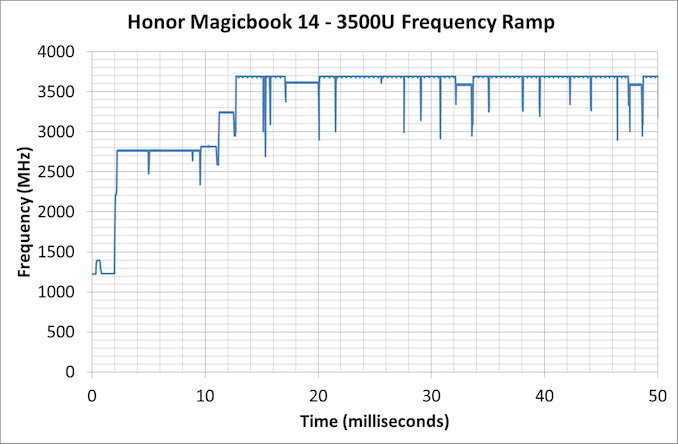
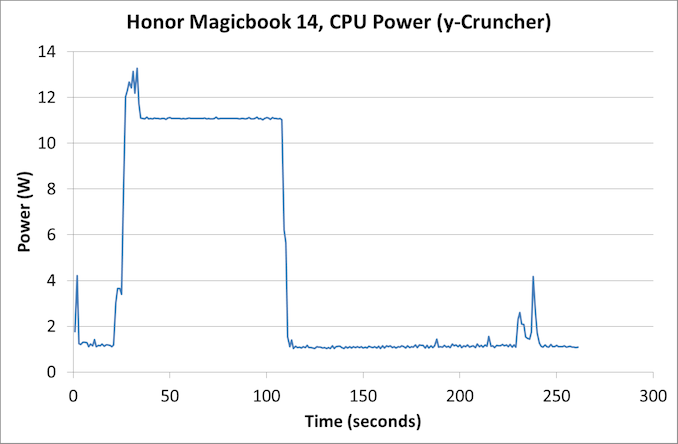
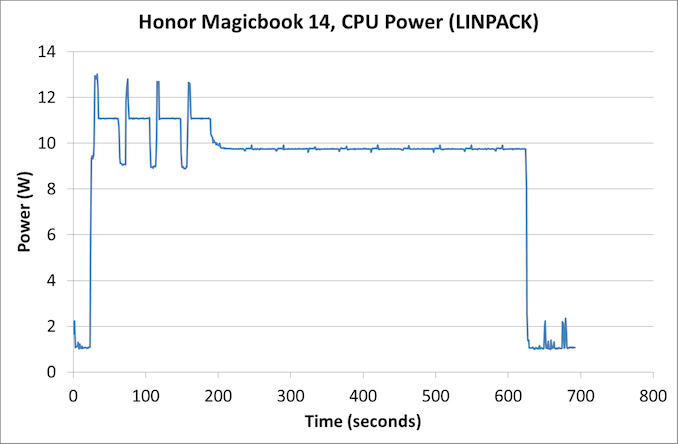
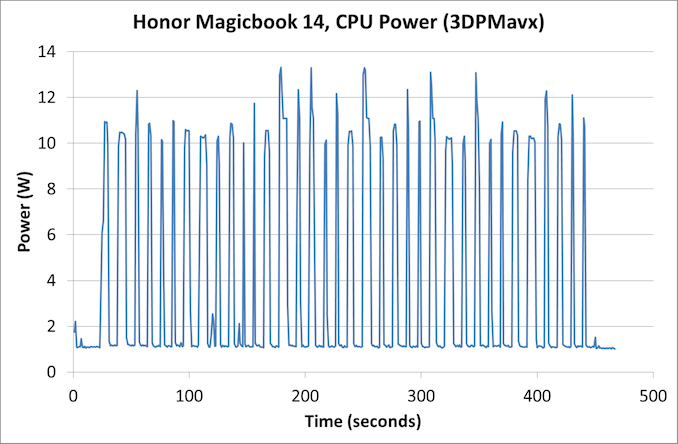


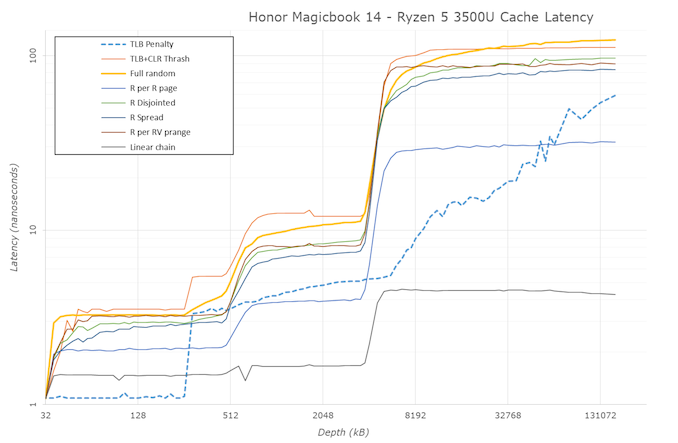








88 Comments
View All Comments
Flunk - Friday, May 15, 2020 - link
If Huawei is blocked from buying US parts, how does this exist? AMD, Microsoft, etc are US companies.porcupineLTD - Friday, May 15, 2020 - link
The ban is selectively enforced by granting licences to US companies that Huawei can live without or that would suffer to much from losing Huawei business. Such companies include Microsoft, Micron, AMD and Qualcomm probably (the latest Huawei phones still have some qualcom ICs in them). Google would probably be on this list too (they applied for a license) but the purpose of the ban was to cripple Huawei and that google banning is the strongest method for that.close - Friday, May 15, 2020 - link
Because the ban is aimed at keeping Huawei as a paying customer to US companies as long as this doesn't allow them to become a competitive threat.porcupineLTD - Friday, May 15, 2020 - link
Exactly, got to love that free market.sharath.naik - Friday, May 15, 2020 - link
There is no concept of free market 8n China, free market require protecting intellectual property. China is all about ripping off existing products, industrial secret theft, all sponsored and encouraged by the communist party.futfut - Friday, May 15, 2020 - link
You just contradicted your self, a free market needs protecting by IP laws? The Chinese and US do it differently, the Chinese method does a better job of promoting free markets. The US method of IP law. enforcement restricts free markets and needs a large government to police, adding friction and enforcing uncompetitive behaviour.LiKenun - Saturday, May 16, 2020 - link
Prime example: patent trolls or non-practicing entities. There is a fine balance which the US seems to not have struck.Cellar Door - Sunday, May 17, 2020 - link
Seems you are not familiar with what patents are. Just like the Chinease free market.FireSnake - Saturday, May 16, 2020 - link
Get your facts straight!China is producing more patents then US!
https://www.reuters.com/article/us-usa-china-paten...
This contradicts your statement.
ibnmadhi - Saturday, May 16, 2020 - link
50 cent army going strong. lol